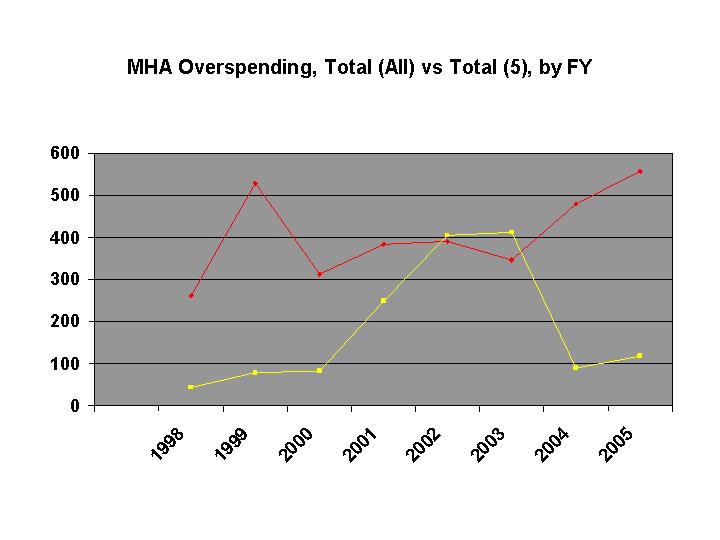The agreed statements entered in some of the trials resulting from the House of Assembly spending scandal are remarkable, if for no other reason than by the incorrect information contained in them.
Take this one from the statement entered on Tuesday in the Bill Murray trial:
In simplest terms, that statement is not true.
The finance department’s Comptroller General continued invariably over the whole scandal period to maintain accurate records of the total amounts paid under the allowances budget item each year.
The Comptroller General’s figures were reported in the provincial government’s financial statements which were – it should be noted – audited each year in the scandal period by first Elizabeth Marshall and then her successor John Noseworthy.
Even a cursory examination of the Public Accounts shows overspending well in excess of what was subsequently reported by John Noseworthy once the scandal story broke.
In fact, as documented at Bond Papers and in Chief Justice Derek Green’s inquiry report, the overspending was obvious. The BP post from December 2006 indicated that the total overspending amounted to more than twice as much as anything Noseworthy ever indicated.

In the chart from that post (above), red indicates the overspending as reported in the public accounts. Yellow is the figure reported by Noseworthy for a given fiscal year. It only includes money identified by Noseworthy as being made to four members of the House of Assembly.
No one – least of all Noseworthy – has explained the massive discrepancy between the available evidence and what Noseworthy reported or the consistent failure of any audit officials to make public reference to the evident overspending.
-srbp-
Related:
- “AG reports leave serious unanswered questions” (July 2006) – discusses problems with Auditor General’s reports on four politicians, including inconsistencies in the way travel expenses were allocated by the AG’s office for the four MHAs.
- “Legislature financial scandal bigger than previously revealed” (August 2006)
- “The little things” (September 2007) – Among other things, the Ag did not offer any comment on the diversion of constituency funds for partisan purposes, something which was improper at the least and potentially illegal at most.
- “NL AG hoist by petard of own misleading statements” (February 2008)
- “AG report makes up old recommendation…” (November 2009) – Notes that an auditor general’s update on previous reports included a fake recommendation which he claimed had been acted on instead of the five on which no information was proved.
